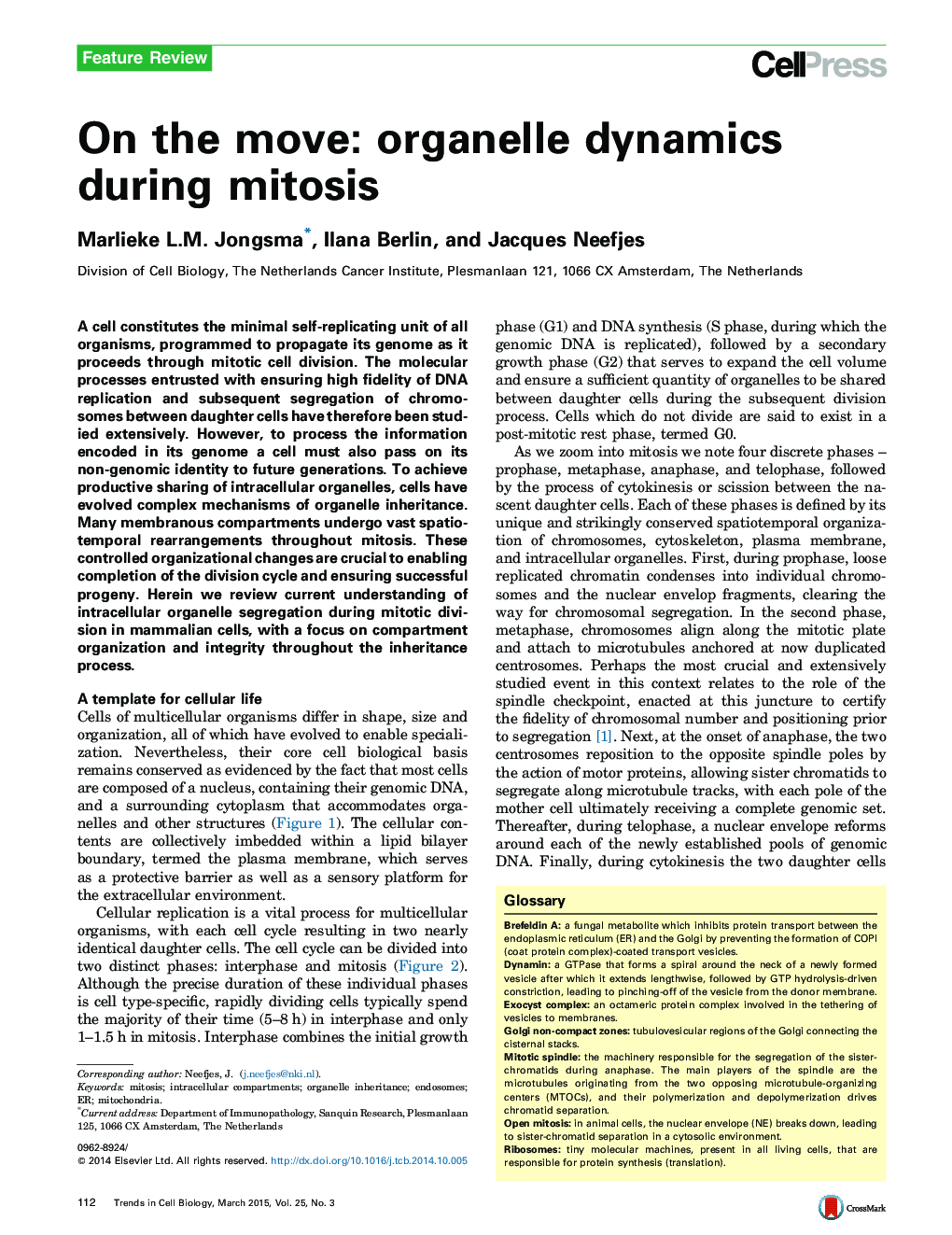| Article ID | Journal | Published Year | Pages | File Type |
|---|---|---|---|---|
| 2204334 | Trends in Cell Biology | 2015 | 13 Pages |
•The mitotic localization and morphology of organelles are dynamic and highly regulated.•At the onset of mitosis, most organelles become dispersed and some even fragment.•At the end of mitosis, most organelles revert to their original position.•Endosomes fulfill a crucial role during cytokinesis and abscission.
A cell constitutes the minimal self-replicating unit of all organisms, programmed to propagate its genome as it proceeds through mitotic cell division. The molecular processes entrusted with ensuring high fidelity of DNA replication and subsequent segregation of chromosomes between daughter cells have therefore been studied extensively. However, to process the information encoded in its genome a cell must also pass on its non-genomic identity to future generations. To achieve productive sharing of intracellular organelles, cells have evolved complex mechanisms of organelle inheritance. Many membranous compartments undergo vast spatiotemporal rearrangements throughout mitosis. These controlled organizational changes are crucial to enabling completion of the division cycle and ensuring successful progeny. Herein we review current understanding of intracellular organelle segregation during mitotic division in mammalian cells, with a focus on compartment organization and integrity throughout the inheritance process.
